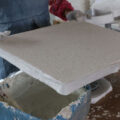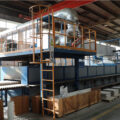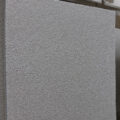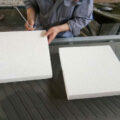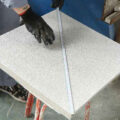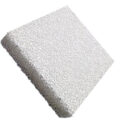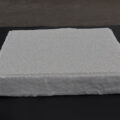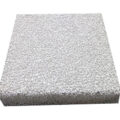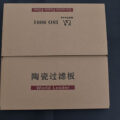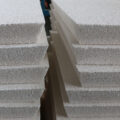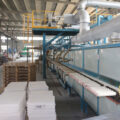Ceramic foam filters are particularly useful for filtering molten metals, especially molten aluminum. The ceramic foam filter has the characteristics of high temperature resistance, and it does not pollute the metal in the molten metal filtration.
Ceramic foam filters for molten metals are low-cost materials and can be conveniently used on a disposable basis. The molten metal is poured into the ceramic foam material at a rate of 5 to 500, preferably 30 to 100 cubic inches per minute per square inch of filtration area per minute to remove entrained solids from the molten metal. The ceramic filter provides an open-cell flexible organic foam material, surrounded by the foam material, and containing multiple interconnected voids.
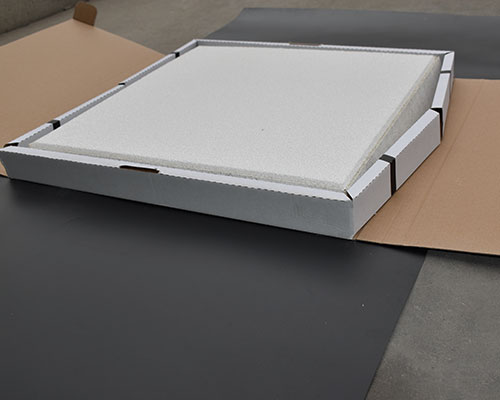
The above-mentioned aqueous slurry is prepared, and the foam is impregnated with the foam material, thereby coating the fiber web with the mesh, and substantially filling the voids with it. The impregnated material is then compressed to discharge about 80% of the slurry, and the remainder is evenly distributed throughout the foam material, preferably so that some pores are blocked in a uniformly distributed manner to increase the degree of tortuosity. The compression is released so that the web remains covered by the slurry and the material is dried. The dried material is then heated to first burn out the flexible organic foam, and then the ceramic coating is sintered to provide a molten ceramic foam with multiple interconnected voids. The void is surrounded by a bonded or fused ceramic mesh in a flexible foam construction.
The main component of ceramic foam material is Al2O3. Al2O3 exists in two forms, the main form is calcined Al2O3, and its size ranges from about 100 mesh to 500 mesh. Al2O3 is particularly suitable as a ceramic foam filter because it is not corroded by molten aluminum. Silicon is eroded by these materials. In addition, alumina has reasonable strength to withstand chemical attack, and has structural and mechanical strength to withstand specific environmental conditions. Al2O3 also exists in the form of micron-sized reactive alumina. Micron-sized reactive alumina is very important, because reactive alumina helps to achieve a uniformly distributed bonding phase and suitable slurry rheology, while allowing plastic materials to be incorporated into the slurry, which tends to affect molten metal is reactive and kept to a minimum.

